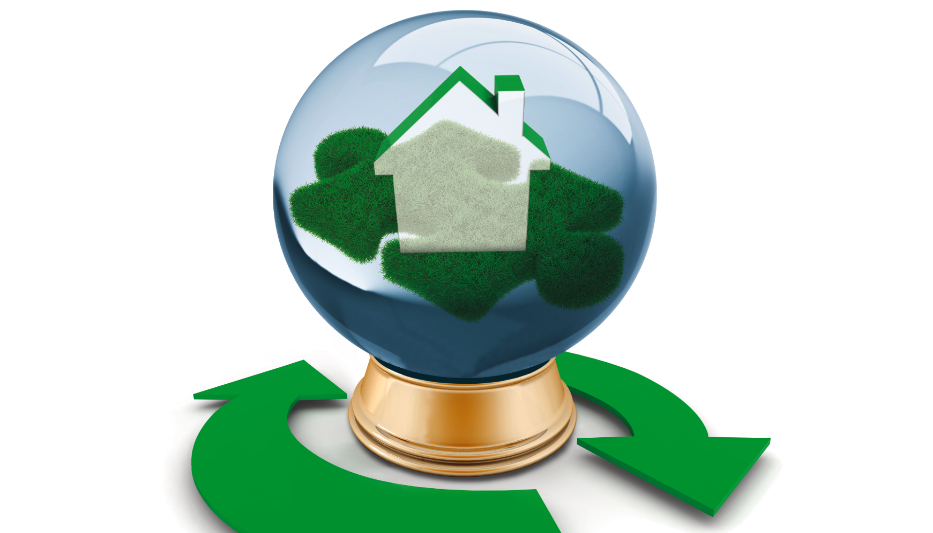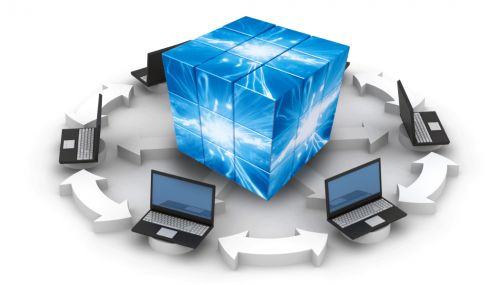All
Selling Heating Equipment for a Net-Zero Future
by Richard Rutigliano, PriMedia, Inc.

How to convince today’s eco-conscious customers to upgrade, not convert
Energy companies face new challenges when promoting heating system upgrades. Some customers are first asking about greenhouse gases and carbon taxes, rather than the traditional hesitancies around financing or “trying to get through another year.”
As more and more communities and community leaders look for ways to push electric heating systems, the anti-fossil-fuel message is trickling down to our customers and making them wary of upgrading. The message these customers are not hearing strongly enough is that BioheatÆ fuel delivers safe, renewable, low-carbon heating without a complete heating system overhaul.
But therein lies the challenge. How do you make the point that Bioheat fuel does not require a heating equipment replacement while also setting yourself up to make the sale when an equipment upgrade really is needed? Your message needs to convey the complementary points of higher equipment efficiencies and the road to net-zero with Bioheat fuel.
Keeping the Customer
Let’s face it – selling equipment is an important part of your business. There’s the income from the sale and installation as well as the virtually guaranteed extension of the account. That works out to several years’ worth of service calls and fuel deliveries that grow from the manufacturer and company warranties and other promotions that may have been bundled in with the sale.
For the industry as a whole, there is the high probability that homeowners who invest in a new liquid-fuel fired heating system will be the slowest to spend tens of thousands of dollars to convert to electric heat.
This messaging is fine for an industry publication like Oil & Energy, but is unlikely to sway a property owner.
So, what will convince your customers that investing in new liquid-fueled heating equipment is the smart choice for their wallets and their future? Bioheat fuel, naturally. Not just today’s Bioheat blends but tomorrow’s Bioheat: the B50+ blends and other renewable liquid heating fuels that will help your customer achieve net-zero emissions.
What’s in it for them?
Your customers’ first concerns are – always – how is upgrading their heating system going to make their lives better. As you are already delivering Bioheat fuel (even if you aren’t blending, all heating oil contains some biodiesel), remind them how the fuel already reduces carbon emissions, and that higher efficiency heating equipment burns fewer gallons, which reduces emissions even further.
The EIA estimates that every gallon of heating oil burned emits approximately 23 lbs. of carbon. Based on information from the NORA-funded Upgrade & Save Rebate program, upgrading cuts fuel use by an average of 124 gallons a year – which works out to savings of approximately $355 dollars and a reduction of approximately 2,852 lbs. of carbon dioxide per year!
“Will I be forced to change equipment in a few years?”
The immediate focus points of most state and regional GHG reduction acts are in the transportation sector and increases in energy efficiency. In New York, carbon targets are set for buildings 25,000 sq.ft. or larger – much larger than the average single-family home. In Massachusetts the new Climate Law will be promoting efficiency and increasing incentives for electrification – but the state has not yet approved any bill mandating that homeowners immediately change their heating equipment.
The fossil fuel “bans” that have been proposed in our region generally target new construction, so even if one or more of them were to make it into law, it wouldn’t likely affect your existing customer base. Additionally, it is unlikely that states will be sending “environmental police” to individual homes to compel equipment change (and probably unconstitutional).
With life spans of 10 to 15 years, the equipment installed in 2021, combined with increasing Bioheat fuel blend levels, will continue to serve the homeowner and offer comfort, reliability and carbon reductions well past the first benchmarks in 2030-2035. By then, it should be even more obvious that renewable liquid heating fuel outperforms electricity and natural gas in terms of decarbonzation.
Selling the Future
When reviewing heating system options with the customer, make sure you also discuss the future of Bioheat fuel. The road to net-zero starts with us, and Bioheat fuel is the only currently available drop-in alternative fuel that consumers can use right here, right now to lower their carbon emissions. This is a message that you should be promoting across the board, not just to customers in need of an upgrade.
But there’s more to the future with Bioheat fuel, and this is where you can really show how your fuel (and your equipment) is truly the solution for a net-zero future.
- At B20, carbon dioxide emissions see a 14.6 percent reduction
- At B50, we hit 40 percent reductions in CO2
- As biodiesel’s lifecycle emission reductions continue to improve — and as more types of advanced biofuels become available — B100 and other renewable liquid heating fuels will be carbon neutral.
These are not pipe dreams; NORA and NBB are already studying the efficacy of B50 and B100 in heating equipment and, to date, have determined that any modifications to existing systems would be so minimal they could be completed during an annual tune-up. Several new and existing burners are approved for use with up to B20 fuel blends, and the national fuel organizations are working with manufacturers, the UL and ASTM to get approvals for B50, B100 and other renewable liquid heating fuels.
Strong Messaging for a Strong Future
It is up to you to get the carbon reduction message out! Your local energy association, NORA, NEFI, and NBB have a variety of tools available for you to use — from digital marketing to infographics and print ads, from website and social media content to TV and radio commercials — but you have to take the steps to put these materials in front of your customers.
Earlier this year, we discussed the importance of creating a Bioheat fuel corporate culture. Making sure your staff is educated and enthusiastic about Bioheat fuel and the industry’s future is also the starting point for your sales efforts. After all, it is a lot easier to convince customers that Bioheat is the fuel for a carbon-free future when your sales manager believes in it!
You should carry the positive message of higher efficiency, lower emissions and the road to net-zero as well as the downsides of converting to electric heat, including high installation costs, high energy costs, lower efficiency, power plants’ fossil fuel dependency, and insufficient renewable electricity supply throughout all your marketing efforts. Additionally:
- Post images of recent installations on your social media feeds and include the customers’ estimated fuel savings in the captions
- Add special content on your website about equipment upgrades, Bioheat fuel and the future
- Add these points to your phone system’s on-hold message
- Include articles on Bioheat fuel and the road to net-zero in your print and digital newsletters Ö better yet, create special “Environmental Update” issues
- Bundle your upgrade promotions with equipment rebates (available through your regional association) and low-interest financing; sweeten the pot with free service contracts, bonus loyalty rewards, or other promotions to offset the investment
- Put “higher efficiency,” “lower fuel use,” and “carbon reductions” at the forefront of your sales materials
- Ask customers who upgraded in the past few years to provide testimonies about their lower fuel bills and higher levels of comfort, and create marketing and communications campaigns around their responses
Selling Brighter, Cleaner Tomorrow
Your customers already trust you and the services you deliver. You are ideally positioned to educate customers about your readily available lower-carbon fuel and its path to carbon neutrality, and to connect that future to the added benefits of higher-efficiency Bioheat fueled heating equipment. The facts are in your hands — it’s all in how you present them.
Richard Rutigliano is President of integrated marketing and communications firm PriMedia, Inc. He can be reached at 516-222-2041 or rrutigliano@primediany.com.
Related Posts
 How Intelligent Are Your Integrated Customer Platforms?
How Intelligent Are Your Integrated Customer Platforms?
Posted on June 25, 2025
 Make Potential Employees Feel Welcome
Make Potential Employees Feel Welcome
Posted on May 14, 2025
 Utilizing Data to Enhance Marketing Campaigns
Utilizing Data to Enhance Marketing Campaigns
Posted on April 28, 2025
 Bringing Order to Chaos
Bringing Order to Chaos
Posted on March 10, 2025
Enter your email to receive important news and article updates.
